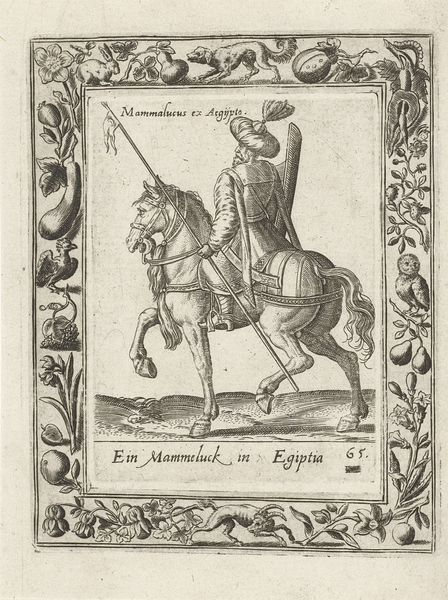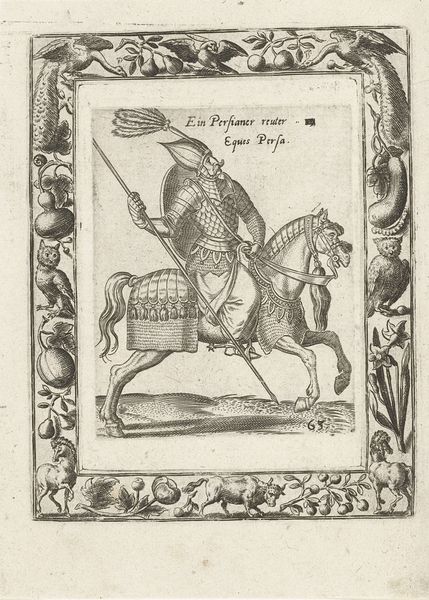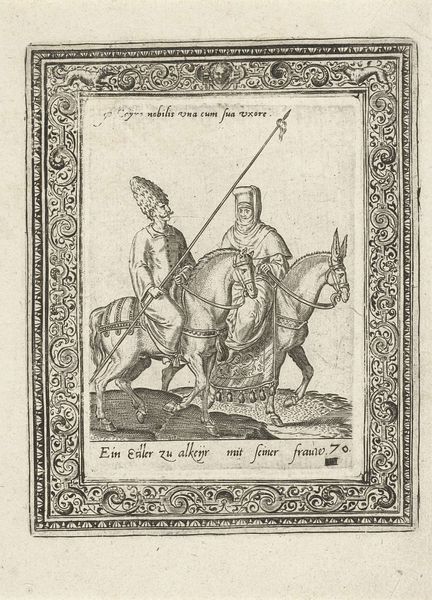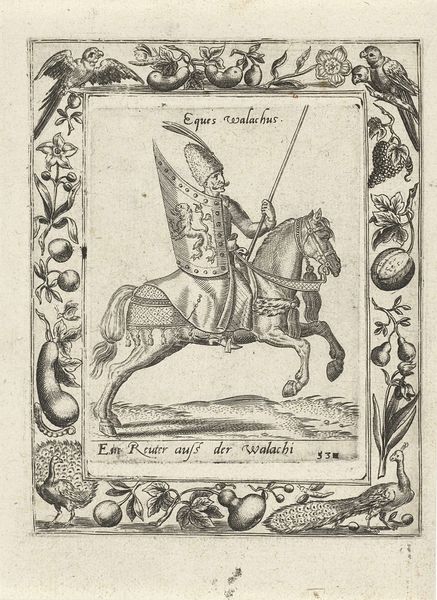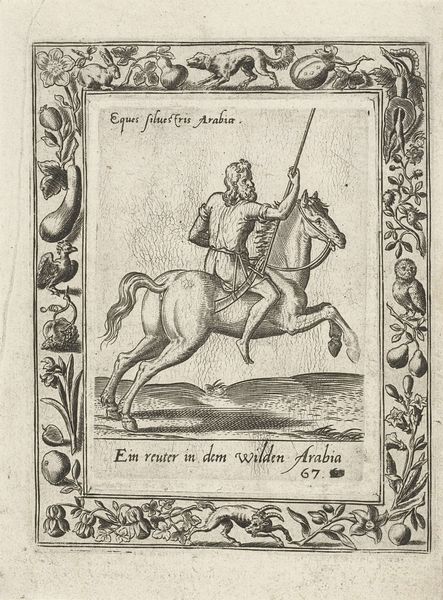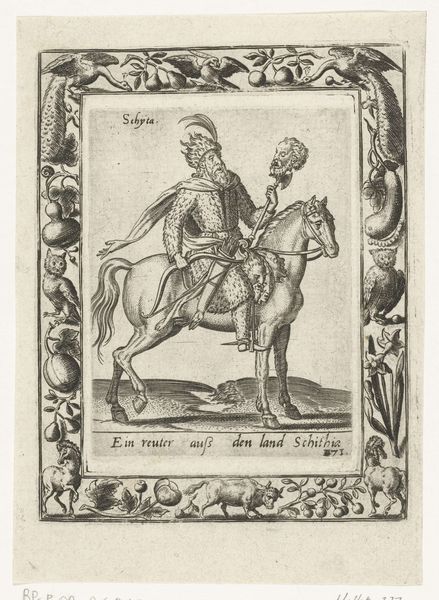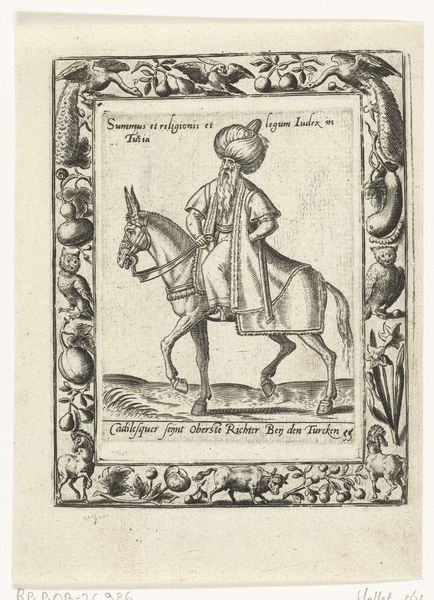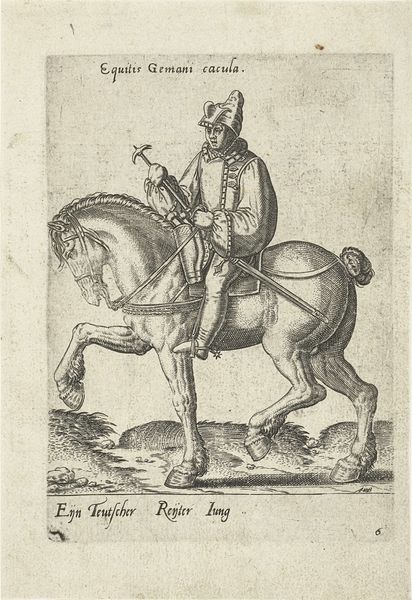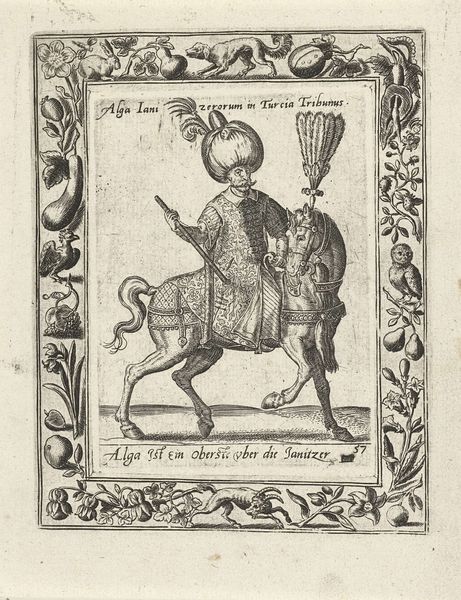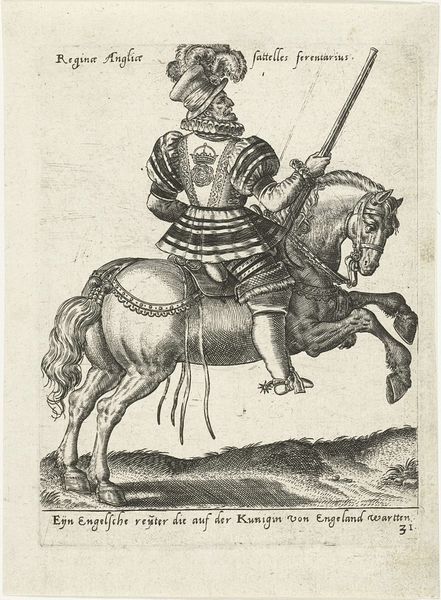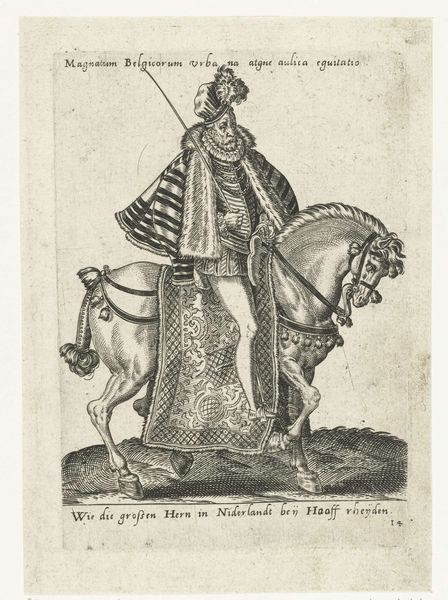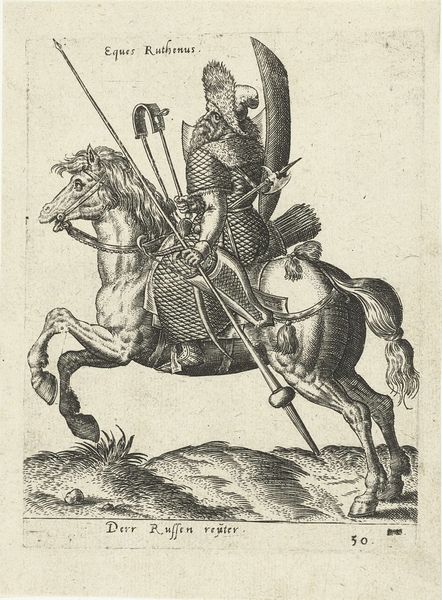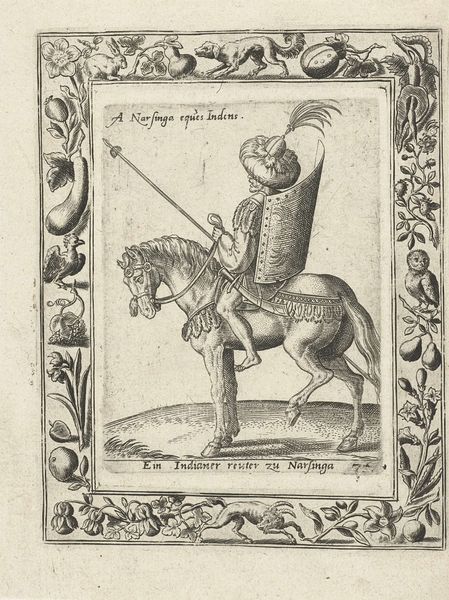
print, engraving
#
portrait
# print
#
old engraving style
#
mannerism
#
history-painting
#
engraving
Dimensions: height 103 mm, width 77 mm, height 140 mm, width 112 mm
Copyright: Rijks Museum: Open Domain
Editor: Here we have a print from 1577, "Hongaarse ruiter," or Hungarian Rider, artist unknown, done as an engraving. I'm struck by how stiff and formal it seems. The rider and horse almost appear like pieces on a chessboard. What can you tell me about this piece? Curator: It's a fascinating example of how prints disseminated cultural ideas in the 16th century. Think of this not just as a portrait, but as a piece of news, a visual report. Consider the role that such images played in shaping European perceptions of different cultures. The "Hungarian Rider" becomes a symbol, laden with meaning about the Ottoman conflicts. Editor: So, it's not necessarily trying to accurately depict a real person? Curator: Accuracy wasn’t always the primary goal. It's about constructing an image of the 'other.' This engraving reflects both fascination with, and fear of, the "exotic" East. What elements in the print reinforce this impression? Editor: Well, his dress is quite elaborate and his weapon, the lance, appears both practical and ornamental. Plus, he's framed by this elaborate border that feels separate from the scene itself, setting it apart, othering it almost. Curator: Exactly. And how might this image have functioned within the political landscape of the time? Who would have been commissioning and consuming this kind of work? Editor: Perhaps political figures, or those involved in trade, to understand different military forces? Or just the curious public? It makes you wonder how accurate this portrayal is, and what biases it reflects. Curator: Precisely. This print reveals not just information about the Hungarian rider, but much about the cultural anxieties and interests of its European audience. It prompts us to question the stories these images told, and who controlled their narrative. Editor: I hadn't considered that an image like this would have its own narrative. This has given me a lot to think about, it goes well beyond just the aesthetic representation of the artwork!
Comments
No comments
Be the first to comment and join the conversation on the ultimate creative platform.
